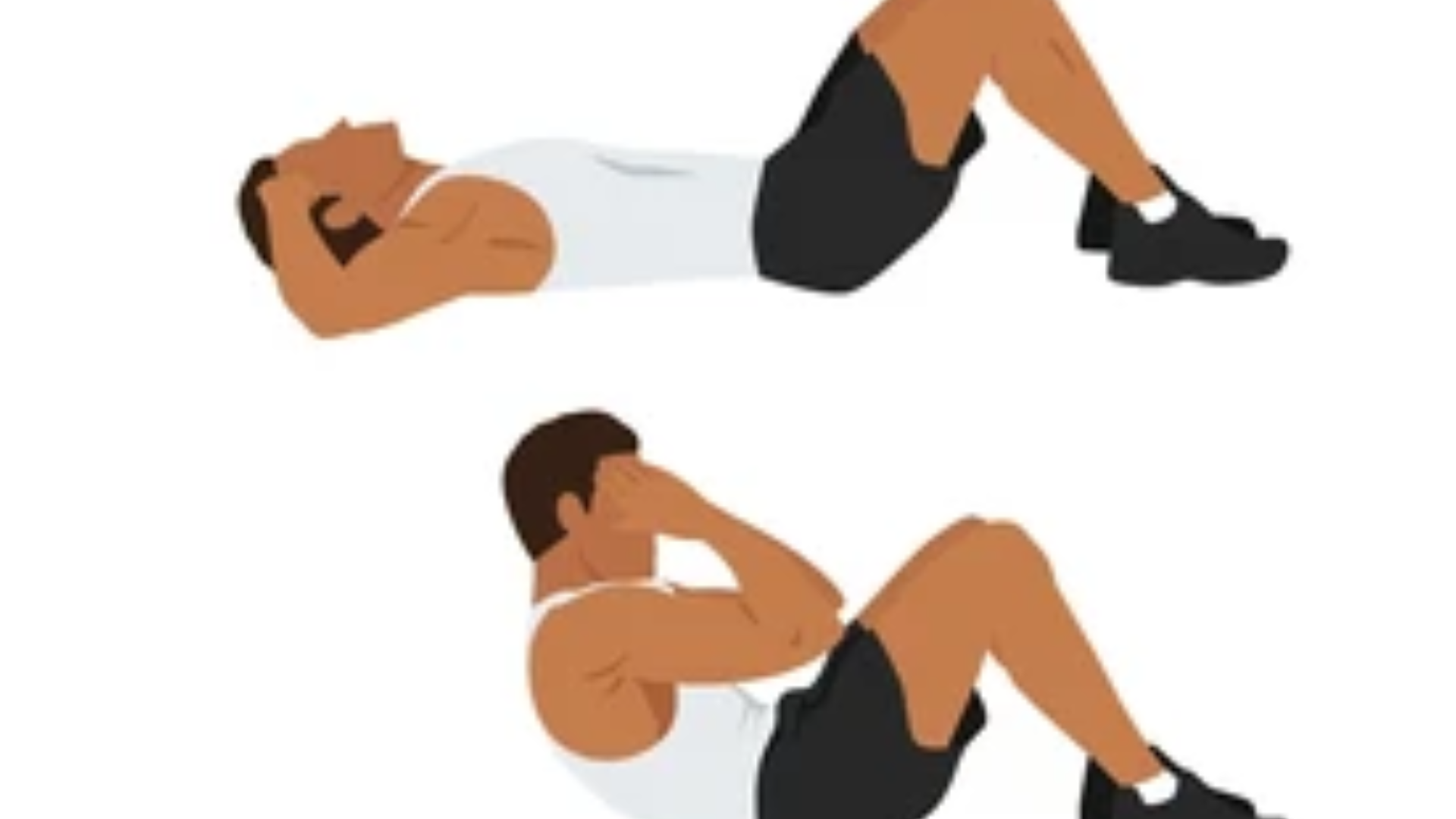
What Are Sit-Ups
Sit-ups are thusly designed as a bodyweight exercise aimed at strengthening the core, and they primarily act upon the abdominal muscles. Often, people believe that the exercise is only targeting the upper abdominals, but sit-ups actually work out the lower abdominals and the hip flexors, which are crucial for stabilizing and regulating movement.
This makes sit-ups one of the best exercises for overall core strengthening. They improve muscle endurance, but more importantly, enhance core stability, important for daily tasks such as bending, lifting, and even good posture.
How to Do Sit-Ups Correctly
Prepare Your Starting Position:
Lie flat on your back on some smooth surface: a mat works great.
Bend your knees to about a 90-degree angle, and keep your feet flat on the floor
Place your hands behind your head- DON’T pull on your neck, or cross them over your chest.
Activate Your Core:
Contract your core muscles as if preparing to take a punch. This should recruit the abs and strongly stabilize your lower back.
Lifting
Focus on curling your spine up to your knees in slow motion. Try to do it with engaged abs, not momentum or jerky motion.
Maintain the low back engaged through the entire process of bringing the object up to your middle and upper back.
Reach the Top:
When your chest approaches your thighs, pause for a sec. This is where the abs are doing their hardest, so hold it for a sec or two before you start your way down.
Lower Back Down Control:
Now, slowly let yourself fall backward, keeping your abs tight the entire time, not flapping but actually holding control of your fall back onto the floor.
Repeat:
Do this movement in front of you to get the desired number of repetitions, if being a beginner, aim for 3 sets of 10 to 15 repetitions. The number of repetitions can be increased or weight added as one gets stronger.
Benefits of Sit-Ups
Tones Your Core
Sit-ups will really put your whole core to work for a killer workout. They target specifically the rectus abdominis, which gives you that look as if you have those six packs, but are utilized by the transverse abdominis (deepest in your body core) and the obliques, which are the muscles found on the sides of the torso.
You will improve your flexibility
Sit-ups allow you to extend your spine and your hips through various motions. Hence, this is a good exercise that helps people improve their flexibility of the spinal and hip regions.
In Relation to Endurance
Consecutive attempts at sit-ups enhance your musculature endurance. This is very effective for athletes or the kind of individual who engages in sports requiring an extended period of core stability.
Core Stability
This exercise improves your core stability.
Having a good core improves stability, meaning posture and coordination is also better; it is extremely important for many everyday tasks-ranging from getting up out of bed to sit upright at your desk to the heavy lifts in the gym.
Reduces Risks of Injury
A fit core serves as a stabilizing force for your entire body. Exercise for your midsection, like doing sit-ups, can decrease the risk of injuries around your lower back and pelvis.
Helps with Weight Loss
They aren’t going to give you a flat stomach, but they can help within the bigger body of losing weight. The more muscles you build, the more your body burns, even at rest. So in doing sit-ups or various renditions, adding them into a balanced workout regimen can lead to fat loss over time.
It’s Here EZ Bar Curl How To Do It And What Are The Benefits
FAQs
Q: Do sit-ups burn belly fat?
A: Sit-ups do not burn body fat in a particular area but are beneficial in building the musculature of your core. The positive interaction of sit-ups with a balanced diet and cardio exercises can cause a burning of the fat over time.
Q: Should I do sit-ups every day?
A: Of course, provided you give your muscles sufficient time to recover. It would probably be better to stick to 3-4 days per week, with some alternate rest days or exercising other muscle groups in between.
Q: What is the difference between sit-ups and crunches?
A: Sit ups take your entire back off the floor, involving both your upper and lower abs. Crunches involve a very tiny range of motion and target primarily the upper abs.

